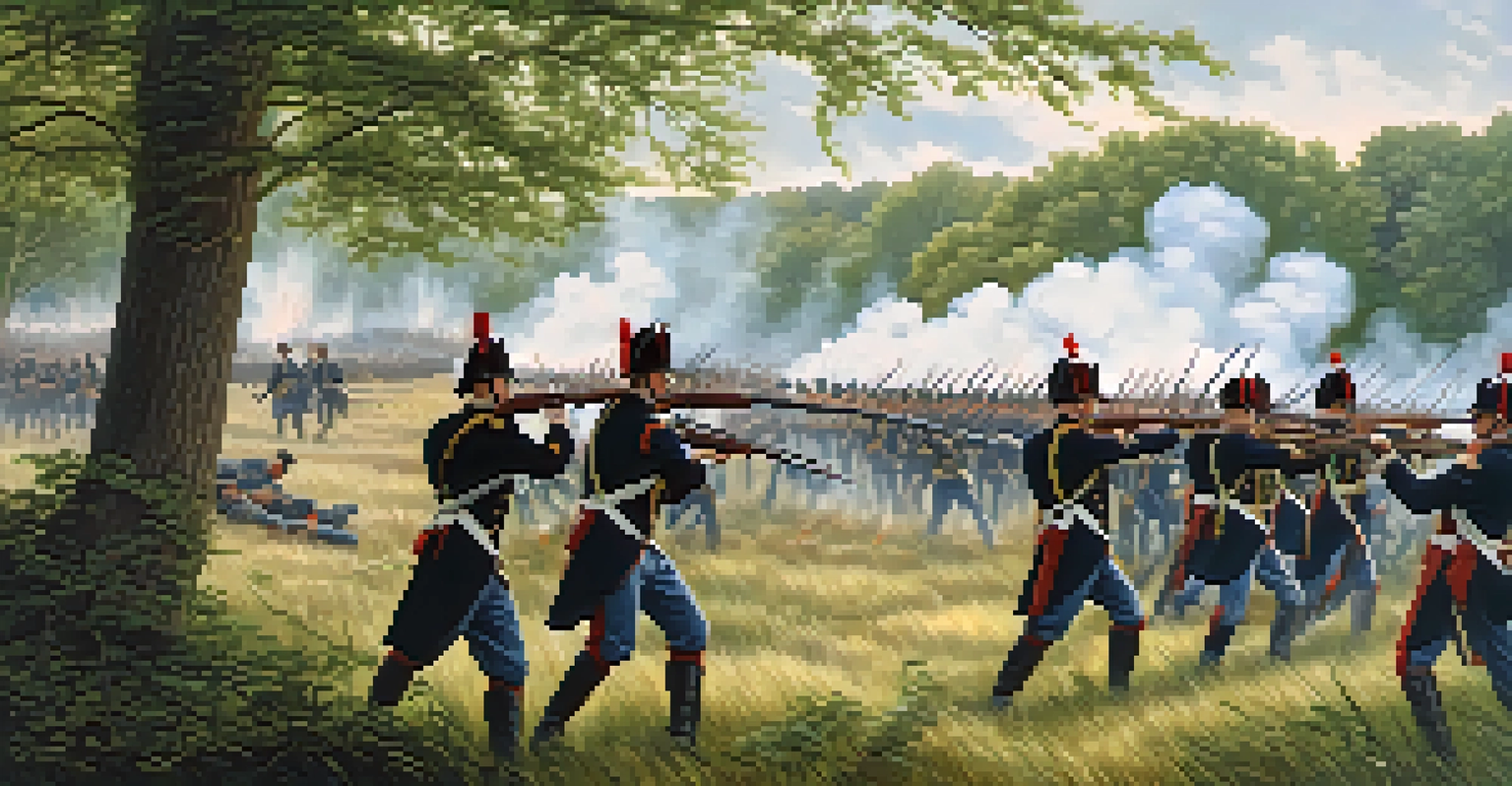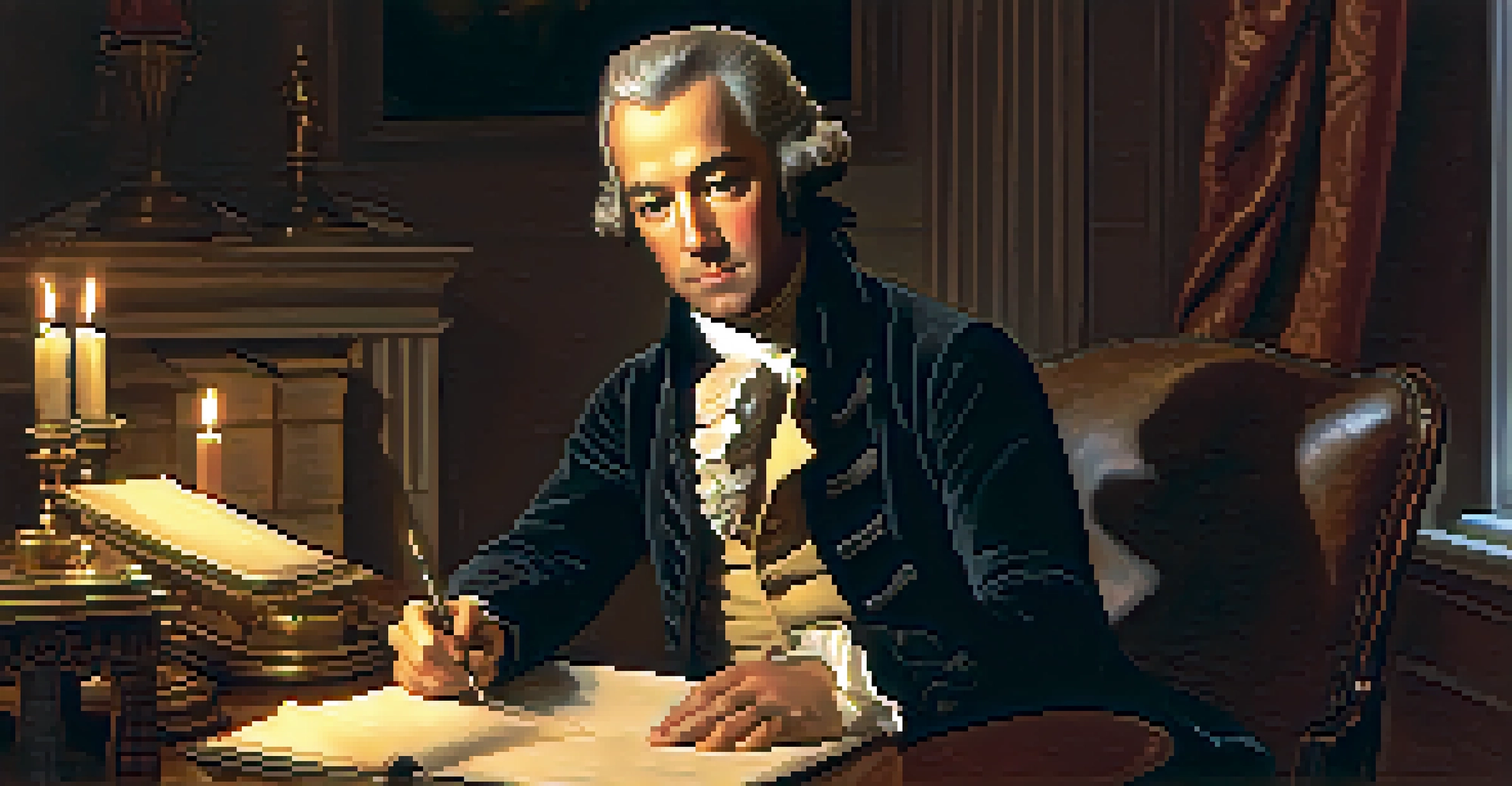New York State During the American Revolution: Key Facts

New York's Strategic Importance in the Revolution
New York played a crucial role in the American Revolution due to its strategic location. Positioned along key waterways, it served as a vital link between the northern and southern colonies. Control over New York meant control over trade routes and military movements, making it a coveted prize for both the British and the Patriots.
New York is a city of aspirations, where the past meets the future in a vibrant tapestry of hope and resilience.
The city's bustling port facilitated the influx of troops and supplies, crucial for sustaining military efforts. It was also the site of significant battles, including the pivotal Battle of Saratoga, which became a turning point in the war. The diverse population in New York further complicated loyalties, with many choosing sides based on personal interests or community ties.
Ultimately, New York's significance was not just military; it was also symbolic. It stood as a beacon of freedom and independence, drawing attention from both domestic and international fronts. This strategic importance played a key role in shaping the outcome of the Revolutionary War.
Major Battles Fought in New York
Several key battles during the American Revolution took place in New York, most notably the Battle of Long Island in 1776. This battle marked the largest engagement of the war and resulted in a significant British victory, showcasing their military strength. Despite the loss, it was a learning experience for George Washington and his troops, who adapted their strategies in subsequent confrontations.

The Battle of Saratoga in 1777 is often cited as the turning point of the war. The American victory not only boosted morale but also convinced France to formally ally with the colonies, providing much-needed support. This alliance was instrumental in shifting the balance of power against the British.
New York's Strategic Role in the War
New York's location made it vital for trade routes and military movements, influencing the outcome of the American Revolution.
Additionally, the Siege of Yorktown in 1781, although primarily fought in Virginia, had roots in the New York campaign. The coordinated efforts of French and American forces that were honed in New York contributed to this decisive victory, ultimately leading to British surrender. These battles highlight New York's role as a critical theater of war.
Influential Figures from New York
New York was home to several influential figures who played pivotal roles in the American Revolution. One of the most notable is Alexander Hamilton, who not only supported the revolutionary cause but also became a key architect of the nation’s financial system. His writings and speeches inspired many to join the fight for independence.
The American Revolution was a turning point in history, and New York was at the heart of it all, embodying the struggle for freedom and justice.
Another significant figure was George Clinton, who served as the Governor of New York during the war. His leadership was crucial in rallying support for the Patriot cause and organizing local militias to defend against British forces. Clinton's commitment to the revolutionary ideals made him a respected leader among his peers.
Lastly, there was John Jay, who was instrumental in diplomatic efforts, including negotiating the Treaty of Paris. His work helped secure the recognition of American independence and laid the groundwork for future relations with European powers. These figures exemplify New York's rich contribution to the revolutionary cause.
New York's Role as a Loyalist Stronghold
While many New Yorkers supported the Patriot cause, the colony also had a significant Loyalist population. Loyalists were individuals who remained loyal to the British Crown, often due to economic interests or cultural ties. New York City, in particular, became a stronghold for Loyalists, with many prominent figures siding with the British.
The presence of Loyalists led to intense divisions within communities, often resulting in conflict between neighbors. This internal strife complicated the revolutionary efforts, as both sides sought to gain control over the narrative and the populace. Loyalists faced backlash, including harassment and property confiscation, as tensions escalated.
Key Battles Shaped the Conflict
Significant battles such as Long Island and Saratoga not only highlighted New York's military importance but also shifted the tide in favor of the Patriots.
After the war, many Loyalists fled to Canada or Britain, leaving behind a legacy of division that would take years to heal. This aspect of New York's history underscores the complexities of the Revolution, where loyalty and allegiance were often tested by personal, economic, and social factors.
The Impact of the Revolution on New York Society
The American Revolution had profound effects on New York society, reshaping its social structure and political landscape. The war catalyzed a shift towards greater democratic ideals, as many citizens began to question traditional hierarchies and the role of government. This period saw an increase in civic engagement and the rise of new political organizations.
Additionally, the Revolution brought about significant changes in economic conditions. The disruption of trade during the conflict forced many New Yorkers to adapt and innovate. Local industries began to emerge, setting the stage for economic diversification in the post-war years.
Socially, the war also sparked discussions about freedom and rights, leading to movements that would address issues such as slavery and women's roles in society. This evolution reflected the broader ideals of liberty and equality that the Revolution championed, ultimately transforming New York into a more inclusive society.
New York City: A British Occupation
New York City was occupied by British forces for much of the Revolutionary War, becoming a center of military operations. The British established it as their headquarters, utilizing its resources and strategic location to launch campaigns throughout the colonies. This occupation significantly affected the civilian population, leading to hardships and displacement.
During the occupation, New Yorkers experienced curfews, food shortages, and the threat of violence. Many residents were forced to flee or adapt to the new military presence. The city's occupation also created a dynamic environment, with spies and informants operating on both sides, adding an element of intrigue to daily life.
Legacy of Division and Change
The Revolution created deep divisions between Loyalists and Patriots, reshaping New York's society and political landscape for years to come.
The British control over New York lasted until the end of the war, when American forces eventually reclaimed the city. The scars of occupation lingered, but the return to Patriot control marked a significant victory and a step toward rebuilding a united New York. This period illustrates the complex realities faced by citizens during the war.
The Legacy of the Revolution in New York
The American Revolution left an indelible mark on New York, shaping its identity and future. The ideals of liberty and self-governance that emerged during this time resonated throughout the state, influencing its political landscape for decades to come. New York's experience during the Revolution set the stage for its role as a leader in the new nation.
In the years following the war, New York City evolved into a hub of commerce, culture, and politics. The lessons learned during the conflict fueled movements for social reform and civil rights, laying the groundwork for future generations. The legacy of the Revolution inspired New Yorkers to continue advocating for justice and equality.

Today, the Revolutionary War is commemorated through various sites and events throughout New York, reminding residents and visitors alike of the state's crucial role in the fight for independence. This enduring legacy serves as a testament to the courage and resilience of those who shaped the course of history in New York.